For those considering moving to either of Colorado’s two largest cities and metropolitan areas, there are pros and cons to both Denver and Colorado Springs, including the cost of living. Each community is a popular place that offers a lot to its residents with some key differences, which we’ll compare below.
Depending on what you’re looking for in a hometown, be it fast access to the mountains, vibrant nightlife, great restaurants, safe streets, good schools, etc., there are neighborhoods and locations in both Denver and Colorado Springs that might fit the bit. Let’s compare Denver vs. Colorado Springs in several important categories for those looking to live in or visit one of these places.
And no matter which city you choose, getting back and forth from Denver to Colorado Springs is quite easy. Downtown to Downtown is only an hour and a half hour, pending traffic. There are buses too that go between metros.
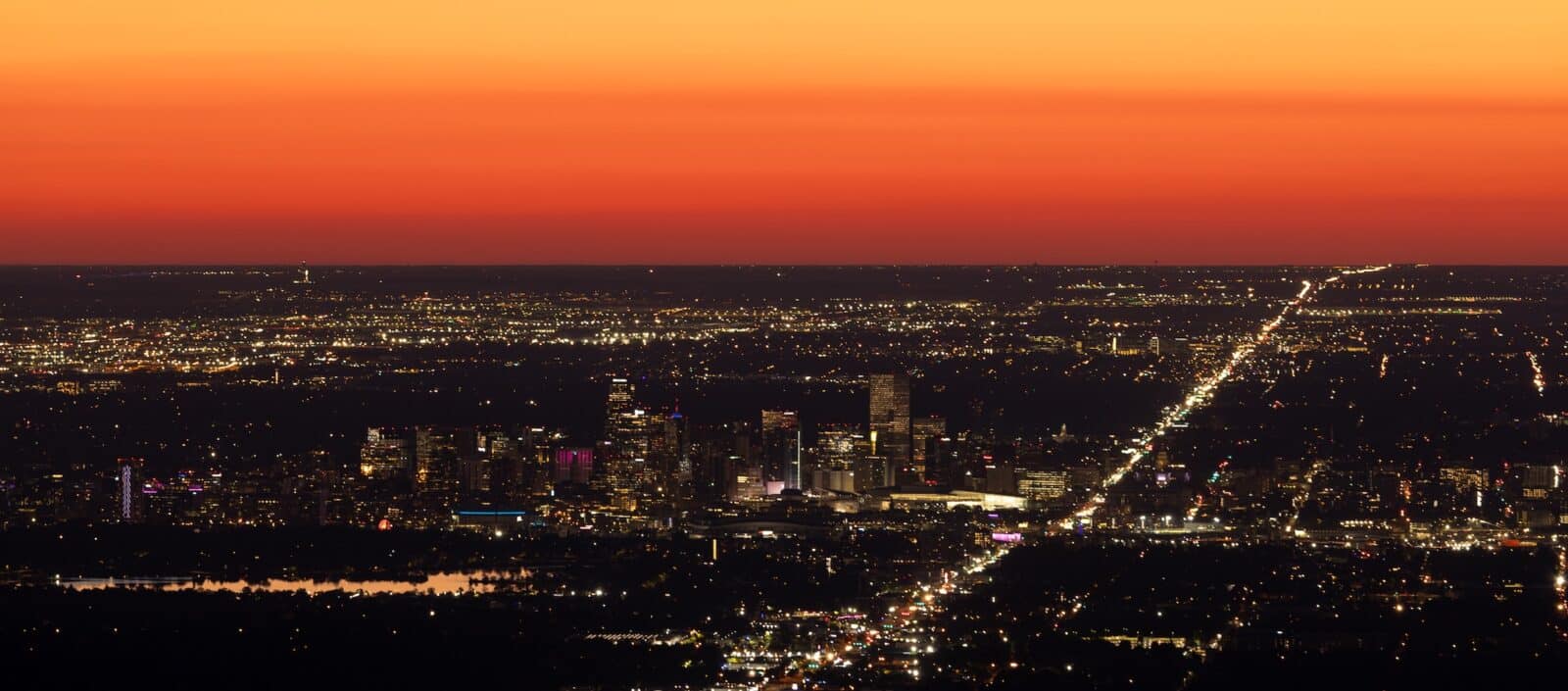
| Colorado Springs | Denver | |
|---|---|---|
| Population City 2020 Census | 478,961 | 715,522 |
| Population City 2025 Estimate | 504,274 | 716,577 |
| Population Metro 2020 Census | 755,105 | 2,963,821 |
| Population Metro 2025 Estimate | 768,832 | 3,421,741 |
| Elevation | 6,035′ | 5,280′ |
| Median Home Sale Price 2025 | $450,000 | $567,400 |
| Buses | Mountain Metro Transit | RTD |
| Trains | None | RTD |
| Airport | COS Regional | DEN International |
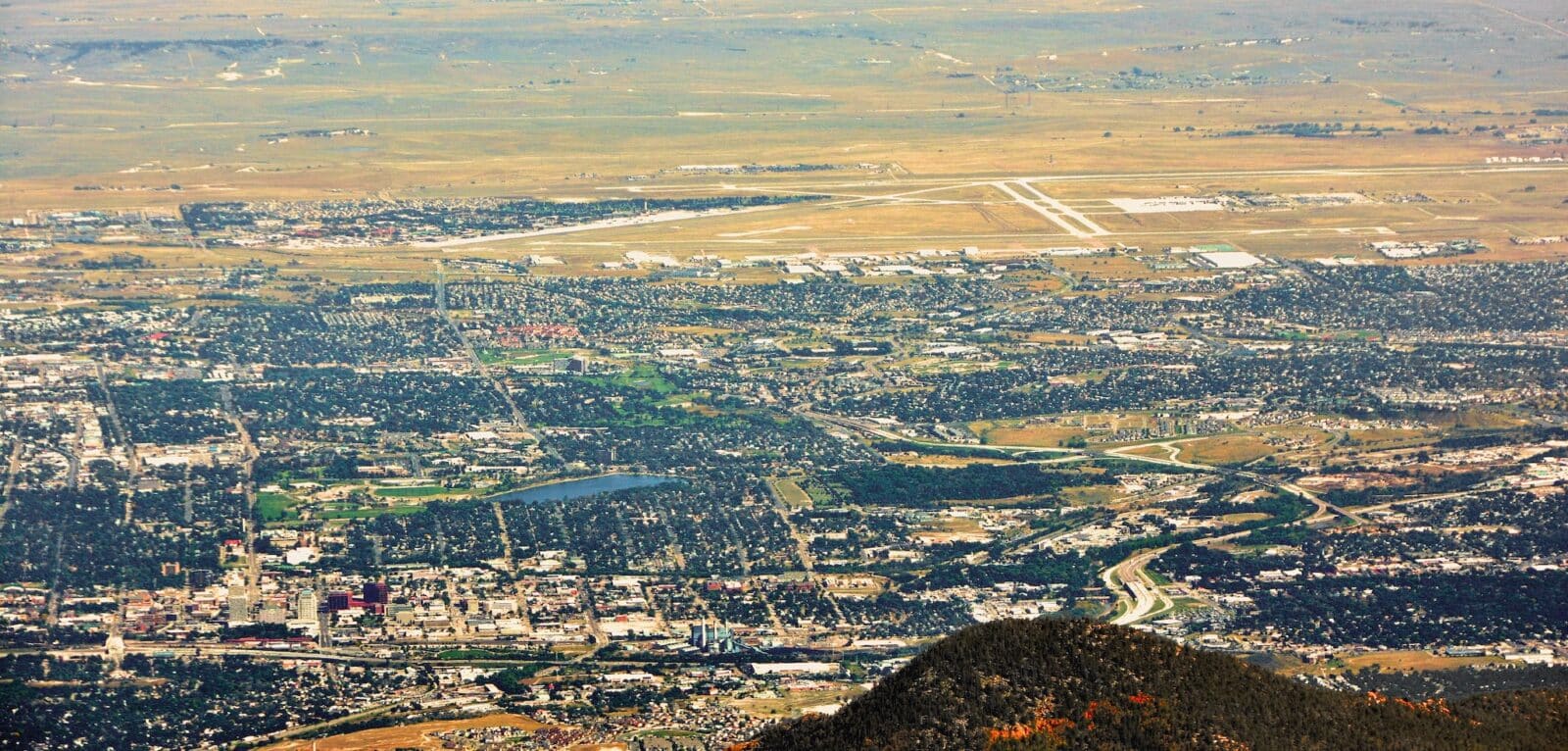
Is Denver or Colorado Springs better? We’ll look at:
- Population
- Traffic
- Public Transportation
- Elevation
- Weather
- Proximity to Mountains
- Cost of Living
- Entertainment
- Overall Vibe
Population
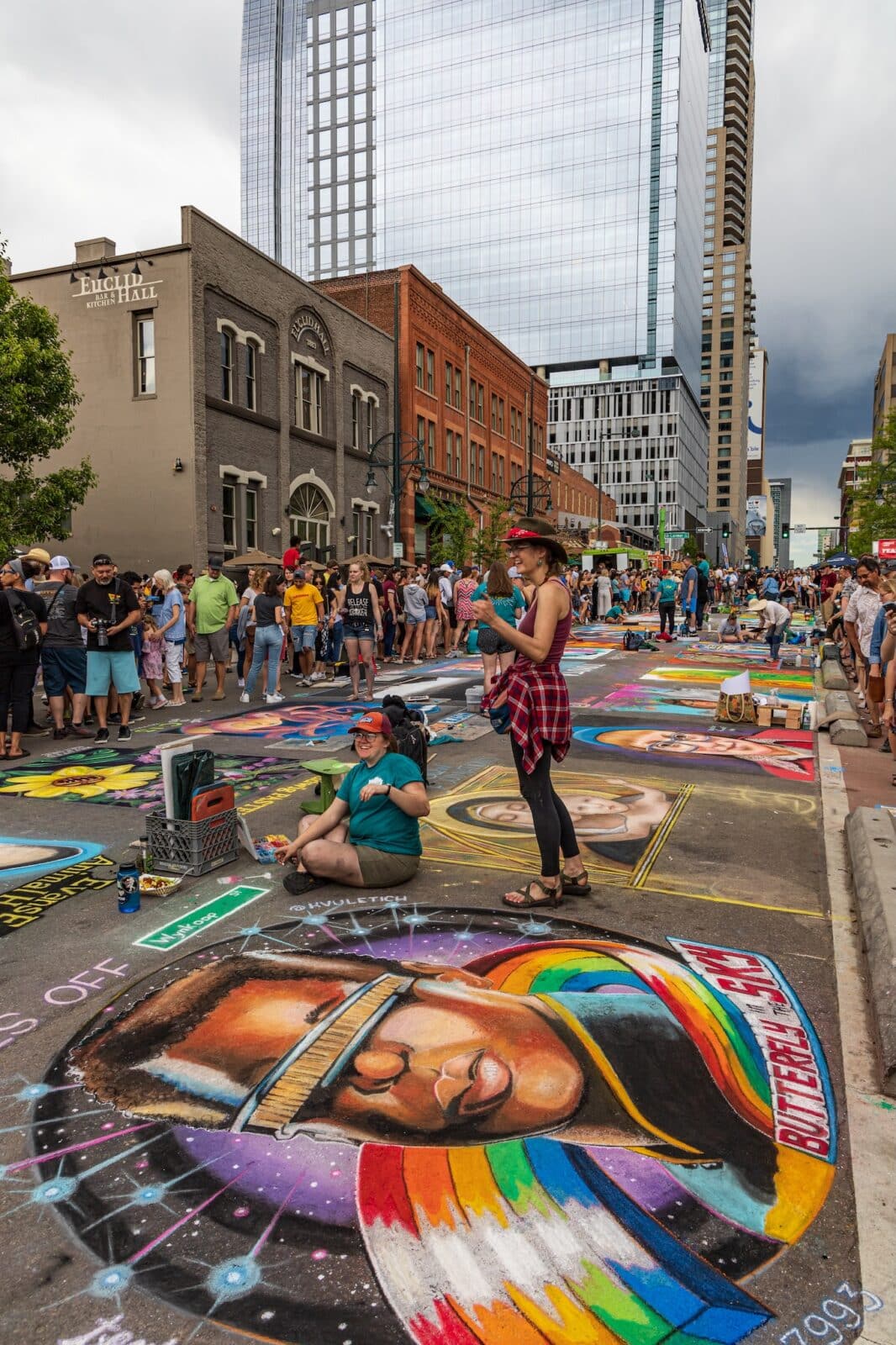
Denver recorded 715,522 residents during the 2020 census and 716,577 are projected to be living in the city in 2025. The Denver Metropolitan Area is much larger too with 2,963,821 people in 2020 and an estimated 3,421,741 residents in 2025.
Colorado Springs had a 2020 census population of 478,961 and a 2025 estimated 504,274 residents. In the greater Colorado Springs Metropolitan Area there were 755,105 at the 2020 census and an estimated 768,832 in 2025.
As you can see, both the city and metropolitan area of Denver are far more populated than Colorado Springs. With that said Colorado Springs has more land area and is expected to one day be Colorado’s most populated city. By 2050 The Springs is projected to have over 750,000 people and 1 million in El Paso County. Its metro will still be smaller than Denver’s but it is growing rapidly.
Colorado Springs is located within El Paso County, which is the fastest-growing and most populated county in the state. It had 730,395 residents in 2020 and 751,488 in 2025.
Denver County only includes the city of Denver, while its metro has many other counties and suburbs located within it.
Traffic

Traffic is bad in both cities but worse in the Denver Metro. I-25 is the main corridor running north and south through Denver, and it, unfortunately, is almost always backed up. It gets congested in several spots, notably around Colorado Blvd. through Downtown Denver, and then again north of the city before Northglenn and the US Route 36 exit to Boulder for several miles.
Luckily, Denver has many other highways, including I-70 running east-west, I-270, C-470 and E-470 (toll road), and I-76, among others. They all can get bad, but it’s nice to have freeways without stoplights, which Colorado Springs lacks but one.
Colorado Springs only has I-25 as its freeway running north-south and the rest are just highways with traffic lights that can reach 55 mph, but only for a few miles at most before hitting an intersection. There also are not many great roads heading east-to-west, so navigating around usually involves many different roads and routes.
Luckily for Colorado Springs, the city is very spread out so traffic is also spread out and while it can get bad, it’s never as terrible as Denver. I-25 in The Springs gets backed up from time to time, and otherwise flows faster than its stint of interstate through Denver.
Public Transportation

Despite suffering from traffic nearly all times of daylight, Denver has much better public transportation than Colorado Springs. If you’re looking to survive without a vehicle, Denver is your only choice. Colorado Springs is quite car-dependent.
Both cities have buses: Denver has RTD buses and Colorado Springs has the Mountain Metropolitan Transit buses. These will get you around their respective metropolitan areas in a scheduled manner, with dozens of routes. There are also intercity buses from Denver to Colorado Springs.
Union Station in Downtown Denver is the hub of Colorado’s public transportation network. From here you can hop on a bus to Colorado Springs or anywhere in Denver, and beyond. An Amtrak train will go east to Chicago or west to California. Hop aboard the A-Line, also simply called the airport train. This route will take you east to the international airport in about 45 minutes.
From Union Station and many other stations around the metro, you can board the RTD Light Rail. This is Denver’s train system, which runs to many suburbs, including Aurora, Lakewood, Golden, Englewood, Littleton, Greenwood Village, Centennial, and Lone Tree.
Denver International Airport is one of the country’s largest and busiest airports. There are dozens of nonstop international flights and even more domestic ones. The Springs also has a reliable airport, although it’s much smaller and only a regional one. The Colorado Springs Regional Airport has several nonstop domestic destinations, including, of course, Denver International Airport, should you need to connect.
Elevation
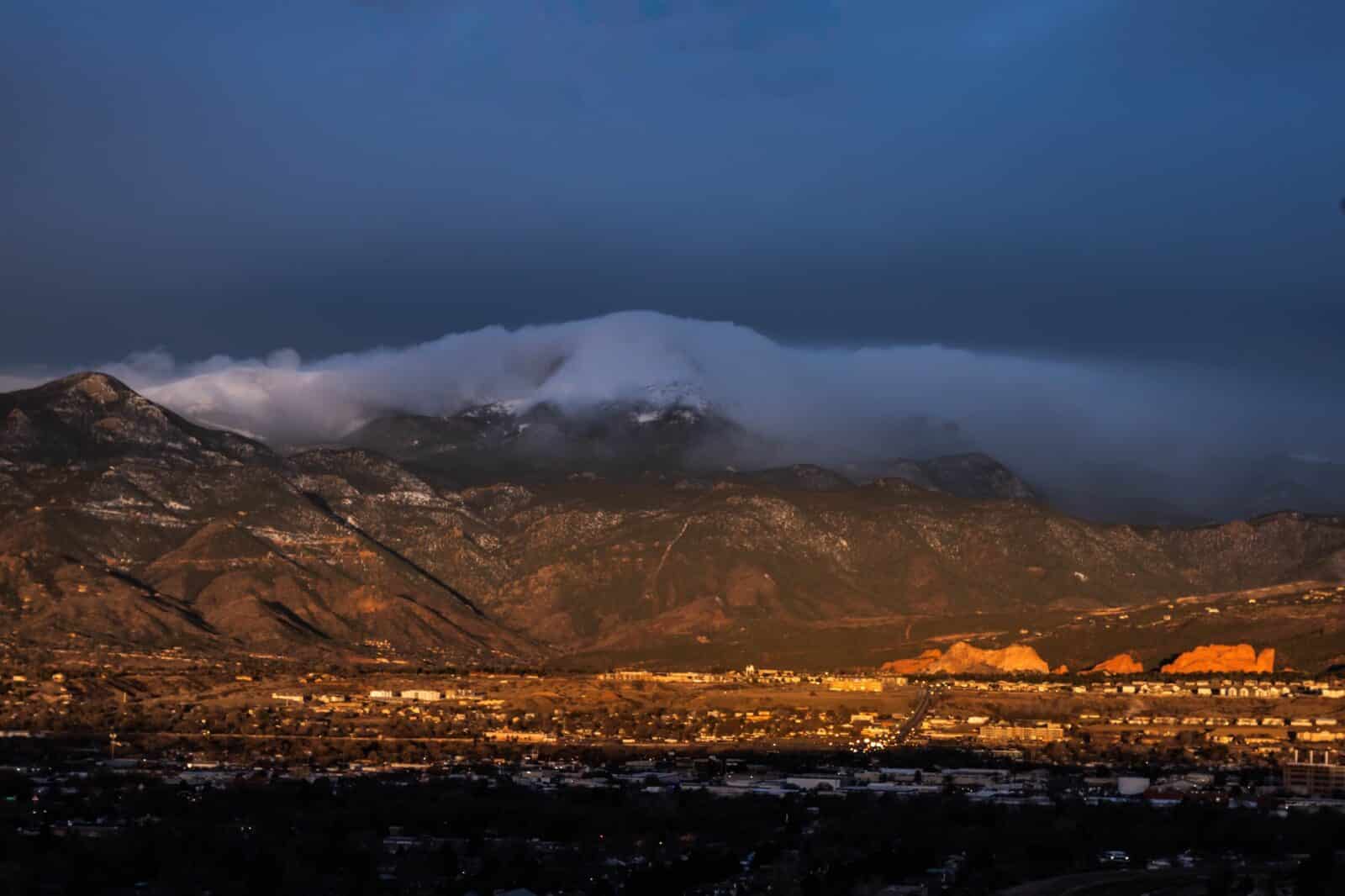
With an elevation of 6,035 feet above sea level, Colorado Springs is higher than Denver’s 5,280 feet. Furthermore, Denver is relatively flat so much of the metropolitan area resides around a similar elevation.
On the contrary, Downtown Colorado Springs is located at its lowest point, and the further you go north, generally, the higher it gets. This means many parts of Colorado Springs can be a few hundred feet higher than 6,035 feet. It also creates a much more hilly terrain around the city.
Gleneagle, a CDP, bordering Colorado Springs to the north is 6,870 feet. Black Forest community borders Colorado Springs to the northwest and lies at 7,369 feet.
Elevation will affect the climate, with the general rule being that every 1,000 feet higher in elevation equates to around 5 degrees colder in temperature.
Weather
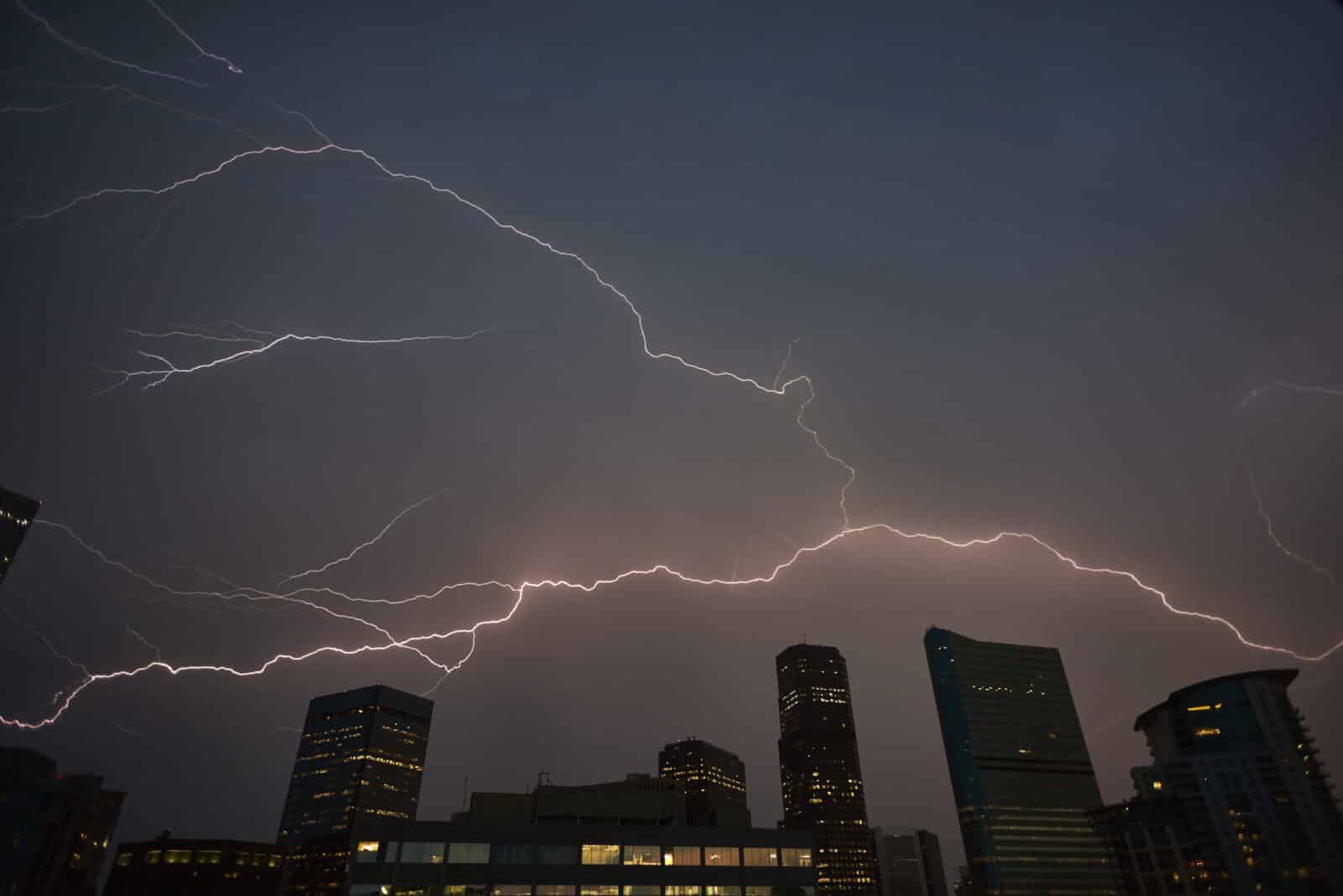
Colorado Springs is slightly cooler than Denver as a whole. This is typically a benefit in the summers and a detriment in the winters for most people. Both cities will see snow, with Denver averaging 56.5 inches and Colorado Springs about the same, at 57.3 inches of snow per year.
Given its proximity to the mountains and higher elevation, Colorado Springs has a bit more unpredictable weather than Denver. Both have drier climates with little moisture and humidity compared to East Coast cities.
Denver Weather Averages: (Source NOAA)
| Month | High / Low (°F) | Rain |
|---|---|---|
| January | 48° / 20° | 2 days |
| February | 49° / 20° | 3 days |
| March | 58° / 29° | 3 days |
| April | 65° / 35° | 5 days |
| May | 73° / 45° | 6 days |
| June | 86° / 55° | 4 days |
| July | 92° / 62° | 5 days |
| August | 90° / 59° | 4 days |
| September | 83° / 50° | 4 days |
| October | 68° / 37° | 3 days |
| November | 57° / 27° | 2 days |
| December | 48° / 20° | 2 days |
Colorado Springs Weather Averages: (Source NOAA)
| Month | High / Low (°F) | Rain |
|---|---|---|
| January | 48° / 27° | 2 days |
| February | 48° / 26° | 4 days |
| March | 57° / 33° | 2 days |
| April | 63° / 38° | 3 days |
| May | 71° / 48° | 6 days |
| June | 83° / 61° | 5 days |
| July | 87° / 64° | 9 days |
| August | 85° / 63° | 7 days |
| September | 81° / 59° | 4 days |
| October | 68° / 45° | 3 days |
| November | 58° / 35° | 1 day |
| December | 50° / 28° | 1 day |
Proximity to Mountains
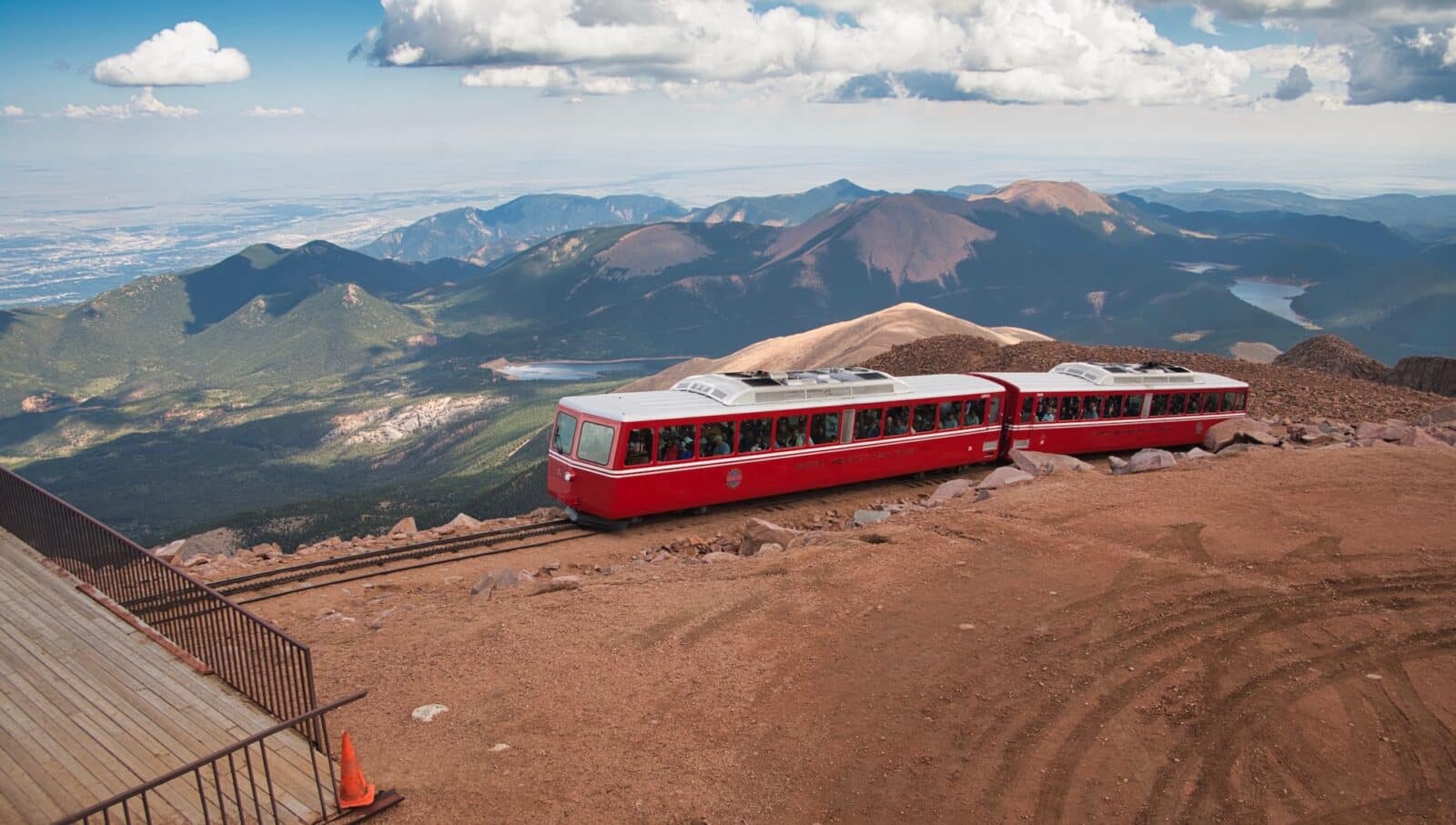
Downtown Denver is located further from the mountains than Downtown Colorado Springs. With that said, if ski resorts are what you’re interested in, Denver is by far the closer and better choice. Check out these ski resorts near Denver and ski resorts near Colorado Springs for reference. However, you can still be a skier or snowboarder and reside in The Springs.
Denver also benefits from fast access to I-70. This is the main east-west thoroughfare through the state. So you can take the interstate west to many cool towns, like Vail, Glenwood Springs, and Grand Junction. This is both a blessing and a curse given the Denver Metro population because traffic can be a nightmare on I-70, especially on weekends.
Due to Denver’s flat location on the plains near the base of the Rockies, nature close to home is typically in the form of public parks and state parks. Otherwise, you have to head west for hills and hope for less traffic and fewer people on the trails. Typically, if you’re within an hour and a half or two of the city on a weekend at a cool attraction, it will likely be busy.
Colorado Springs, on the contrary, is located amongst the foothills with interesting topography and an abundance of natural landmarks all around town. From Pulpip Rock and Palmer Park to the Garden of the Gardens, going for a fun hike in nature is much easier at public parks in Colorado Springs. There are state parks near Colorado Springs within a day’s trip of the city, with the closest being Cheyenne Mountain State Park in the city.
The main highway west of Colorado Springs is US-24, which is only a single lane in each direction. This winds up Ute Pass, Woodland Park, Eleven Mile Reservoir, and South Park on the way to Buena Vista. There is a back route to Breckenridge and Summit County when combined with US-9 north at Hartsel. You can also venture southwest on State Highway 115 from The Springs to Cañon City, the Royal Gorge, and onto Salida.
Cost of Living
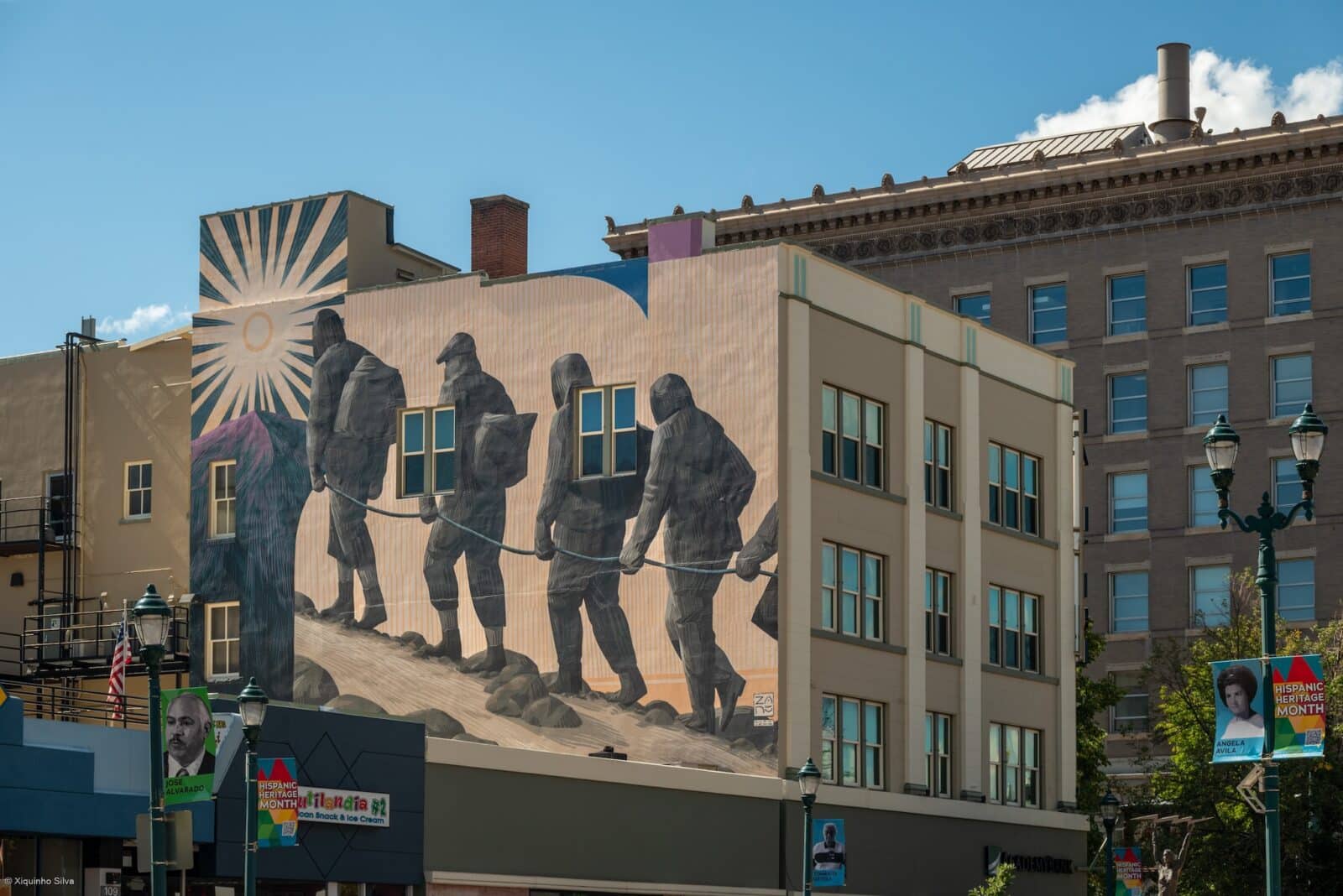
According to realtor.com, the 2025 median sold home price was $450,000 in Colorado Springs and $567,400 in Denver. Even adding in the two cities suburbs as options, Denver still has higher real estate and rent costs than Colorado Springs. Aurora, located east of Denver, would be the cheapest place to rent or purchase a home in Denver, but still far from cheap. The southside or fast east side of Colorado Springs would offer more affordable housing costs, but again, nothing is cheap in either city, just less expensive.
Other than housing, the cost of living is pretty similar between the cities in terms of food, entertainment, and other things you might spend money on.
Learn about the top neighborhoods in Denver.
Learn about the top neighborhoods in Colorado Springs.
Entertainment
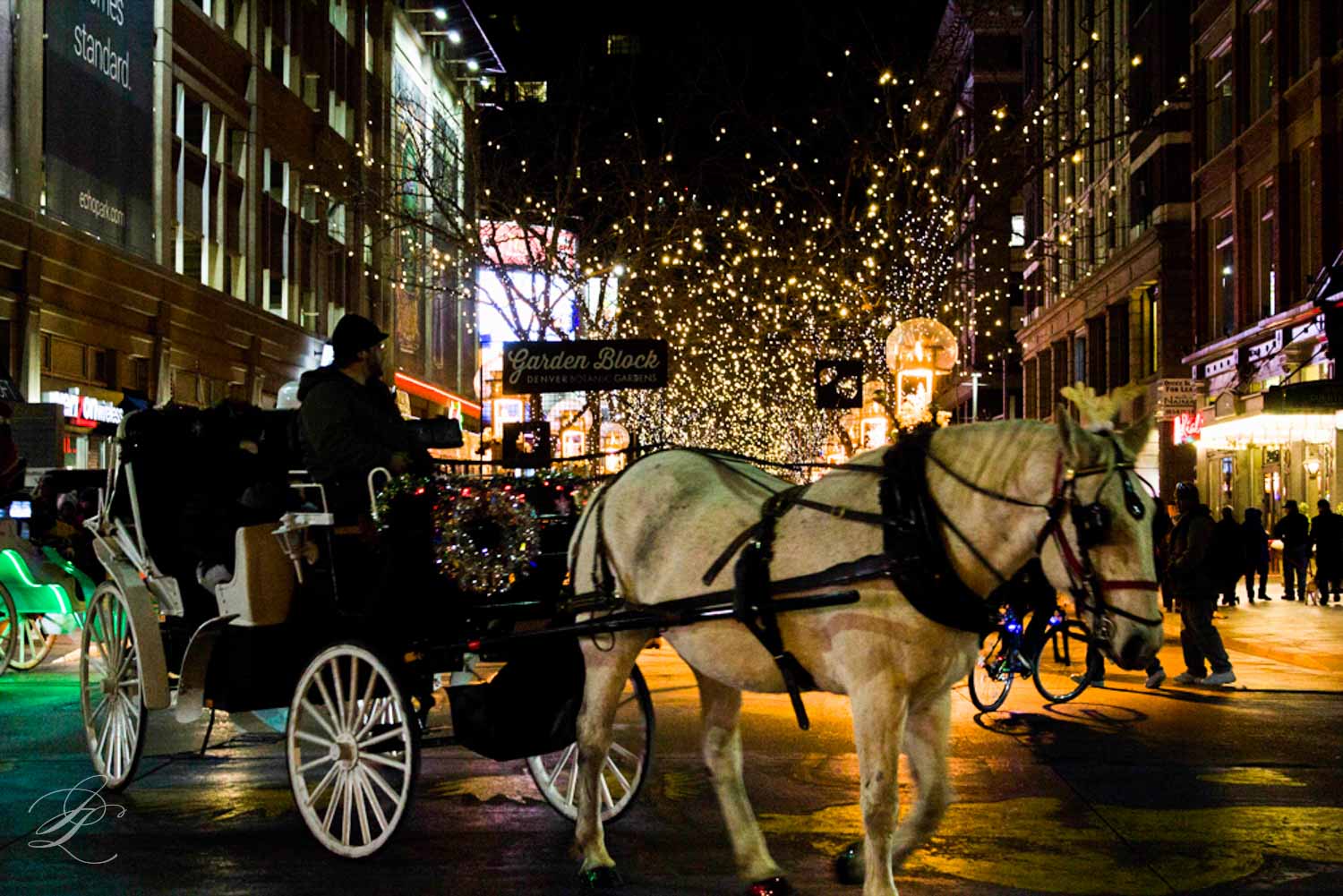
Both cities feature a slew of awesome attractions and are fun places for all ages. Tourists sometimes stay in Denver and drive to Colorado Springs to see its world-class sights, like Garden of the Gods, Cave of the Winds, Cheyenne Mountain Zoo, and Pikes Peak Highway. Given the extra elevation, Colorado Springs tends to stay about 5 degrees cooler than Denver, providing just enough relief from the summer heat to be outside.
Downtown Denver has the better nightlife, mostly in its Lower Downtown (LoDo) area. Although it does get crowded and busy, and can be overwhelming for some people. Downtown Colorado Springs on the flip side is smaller but still has plenty of bars and a bustling vibe. It’s centered around Acacia Park and has several walkable blocks lined with shops and restaurants.
Overall, Denver has far more things to do in terms of attractions and nightlife, although, if hiking and nature-based recreation is specifically what you’re looking for, Colorado Springs wins here. It’s sometimes concluded that Colorado Springs is more for families and Denver for young folk looking for a vibrant social life.
Check out some of these articles on activities in the cities:
- Top things to do in Denver
- Things to do with kids in Denver
- Free things to do in Denver
- Top things to do in Colorado Springs
- Things to do with kids in Colorado Springs
- Free things to do in Colorado Springs
Overall Vibe
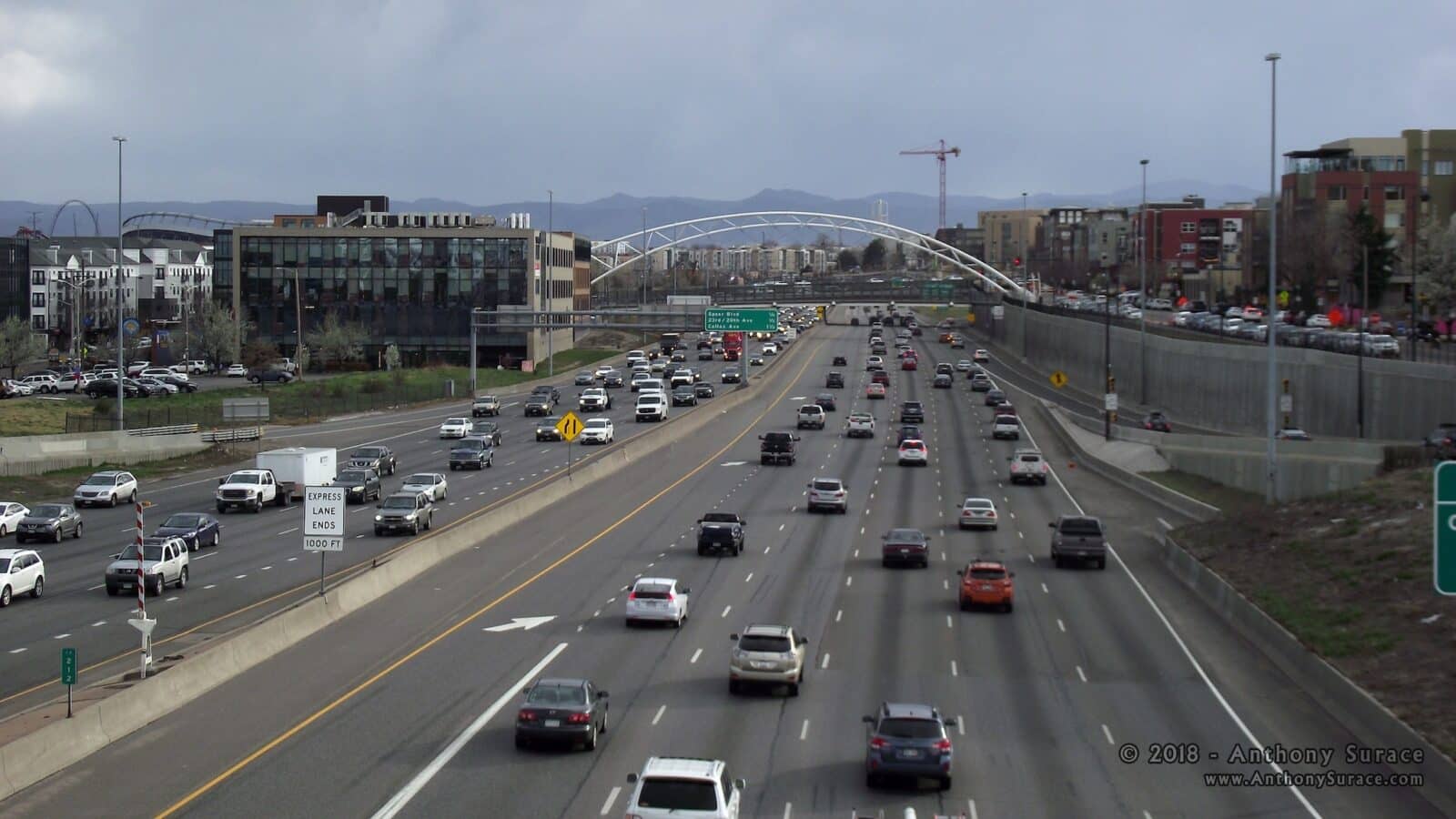
Both metropolitan areas are growing and you’ll see changes all over town, from new housing and apartment complexes to seemingly neverending road work. Overall, Denver feels like a bigger city with skyscrapers, and Colorado Springs a big small town. Compare Denver’s tallest buildings to Colorado Springs’ tallest buildings.
The roads in Colorado Springs appear to be in worse shape with potholes, however, they seem to be working on it. Denver has more cars and people, so try and find a home near where you’ll work to avoid too much time spent in traffic.
The air is supposed to be cleaner in Colorado Springs due to an inversion problem in Denver, trapping the dirty air by the cool ground under a blanket of warmer air above. This smoggy air is trapped in part due to the front range mountains the city resides next. Other cities with similar geographies such as Salt Lake City and Boise can also experience pollution from inversion.
At times Denver is one of the country’s more polluted cities, though Colorado Springs can rank bad too. At the time of writing, Denver-Aurora was 6th worst in the country for ozone pollution and Colorado Springs was 20th worst.
The Military has a large presence in Colorado Springs, with several bases. These include the United States Air Force Academy, Schriever Space Force Base, Cheyenne Mountain Space Force Station, Peterson Space Force Base, and Fort Carson Army Base.
Lastly, we’ll briefly talk about politics and religion in case you’re wondering. On average Denver leans more left than Colorado Springs, which leans just slightly right. Colorado Springs is thought to be the more religious of the cities. If you want to avoid these topics, it’s doable in either city.
Wherever you end up in Colorado, enjoy your time! Both Denver and Colorado Springs are some of the best places to reside in the country. For more reading, here’s a look at why people move to Denver and reasons to move to Colorado Springs.


 9 Ski Resorts Closest to Colorado Springs
9 Ski Resorts Closest to Colorado Springs